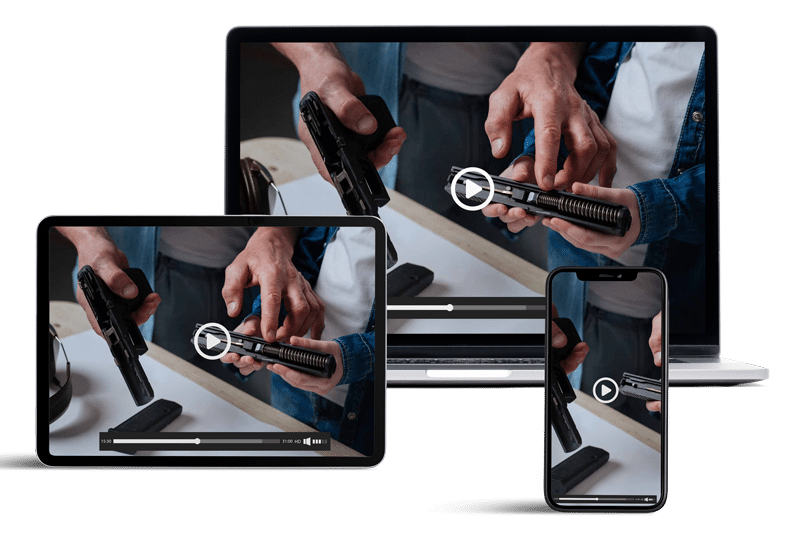Owning, maintaining, and firing a gun requires learning four rules of firearm safety: point the weapon away from anyone or anything, always handle the gun as if it’s loaded, have knowledge of the target and the surrounding area, and keep the trigger finger away from the trigger until ready to fire, which is also known as trigger discipline. Here’s what you need to know about trigger discipline, brought to you by the firearms education professionals from Online Texas LTC, the experts to turn to if you want to take a Texas CHL class.
Trigger Discipline Explained
Regardless of the type of firearm, consciously keep your index finger off the trigger and outside the trigger frame. Appropriate finger positioning is commonly along the bottom edge of the trigger frame and parallel to the barrel. You must also have the discipline to know when to put your finger on the trigger.
The Importance of Trigger Discipline
An improper position of the firearm in the event of discharge may direct the round in the wrong direction. If you’re in the presence of others and have your finger on the trigger before aiming the firearm, a round may fire too soon. Innocent bystanders or pets may become injured, or valued objects may get damaged by a direct hit or a ricocheting round. You might also accidentally injure yourself depending on the position of the gun when it discharges. High-stress situations that may require defensive measures increase the risk of negligent discharge. Forming the habit of practicing trigger discipline early on trains the brain and encourages muscle memory.
Weapon Selection
Trigger discipline begins with having a firearm that appropriately fits the owner. When selecting a weapon, you must be able to reach the trigger comfortably, which also enables you to properly rest your index finger outside the trigger frame. A gun that’s too heavy to safely handle poses a risk and may cause a negligent discharge if your finger isn’t kept away from the trigger. The force required to pull the trigger also varies with handguns.
Additional Trigger Control Challenges
A heavy trigger necessitates the use of more force to fire the weapon. The difficulty may also cause your finger to shake, which could lead to the gun changing positions before the shot fires. You must be able to quickly remove your finger from the trigger after firing. When you’re first learning to handle a firearm, the noise or gun recoil is so unexpected that you may not think to keep the weapon safely positioned. You may keep your finger on the trigger, which creates a potentially dangerous situation.
Practice Exercises
Using an unloaded firearm, practice resting your index finger away from the trigger. Repeating the practice forms the habit. Advancing the practice involves drawing the gun and pointing it at a target while resting the index finger. Progress to pointing the gun and actually aiming at the target by aligning the sights without touching the trigger. Finally, practice pulling the trigger.
Whether you use a gun for hunting, self-defense, or competition, make sure you have the proper training to handle, use, and store it safely. You can count on the firearms education pros at Online Texas LTC for the highest-quality training available. Whether they’re looking for LTC proficiency testing or they want information on how to get a handgun license online, Texas residents should call us today at 512-675-2206.





